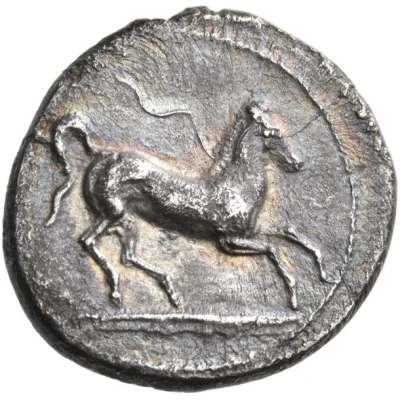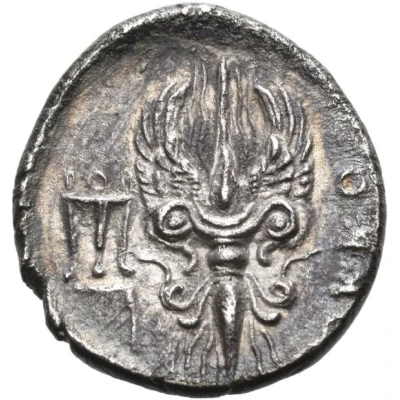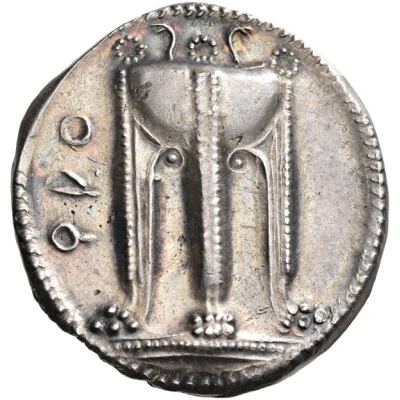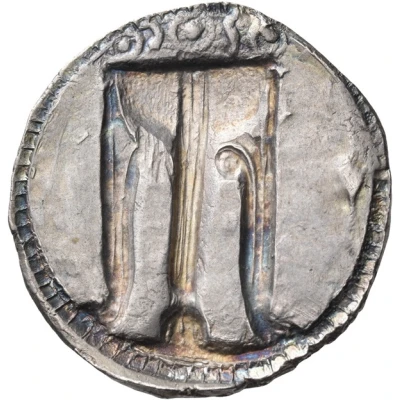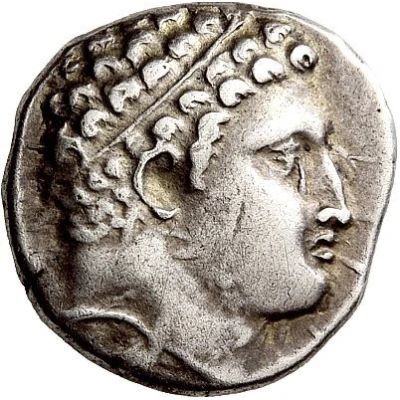
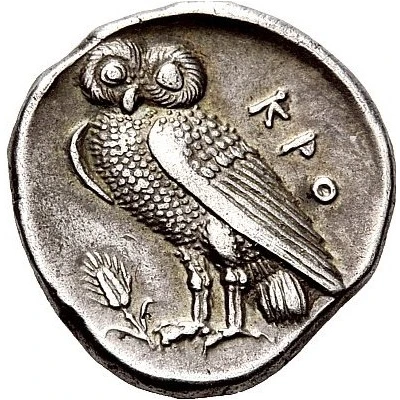

© Nomos AG
Octobol 300 BC - 250 BC
| Silver | 3.12 g | 16.0 mm |
| Issuer | Kroton (Bruttium) |
|---|---|
| Type | Standard circulation coin |
| Years | 300 BC - 250 BC |
| Value | Octobol (4⁄3) |
| Currency | Achaean drachm |
| Composition | Silver |
| Weight | 3.12 g |
| Diameter | 16.0 mm |
| Shape | Round (irregular) |
| Technique | Hammered |
| Orientation | Variable alignment ↺ |
| Demonetized | Yes |
| Updated | 2024-10-09 |
| Numista | N#184062 |
|---|---|
| Rarity index | 97% |
Reverse
Owl with closed wings standing left. At feet to left, grain ear on stalk
Script: Greek
Lettering: ΚΡΟ
Comment
Attianese 156; Demeester 15.
Interesting fact
The Octobol coin from Kroton (Bruttium) was used as a form of currency in ancient Greece, specifically in the city of Kroton, and was made of silver. It weighed 3.12 grams and was used for everyday transactions. One interesting fact about this coin is that it features an image of a bull on one side and a dolphin on the other. The bull was a symbol of strength and fertility, while the dolphin represented the city's connection to the sea. This coin was used during the time of the ancient Greek city-state of Kroton, which was known for its rich agricultural land and its strategic location on the Ionian Sea. It's worth noting that the Octobol coin was also used in other cities in ancient Greece, but the one from Kroton is particularly interesting because of its unique design and the historical context in which it was used.
Price
| Date | Mintage | VG | F | VF | XF | AU | UNC |
|---|---|---|---|---|---|---|---|
| ND (300 BC - 250 BC) | - | - | - | - | - | - |
Values in the table are based on evaluations by sales realized on Internet platforms. They serve as an indication only for Octobol (300 BC - 250 BC) coin.
